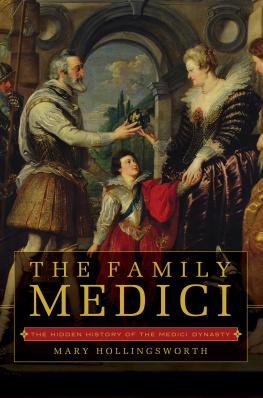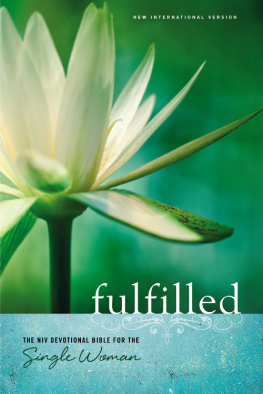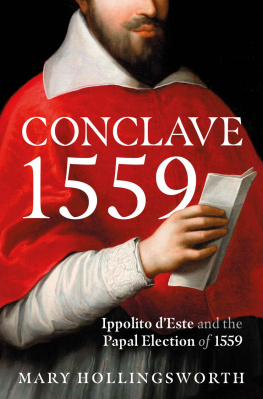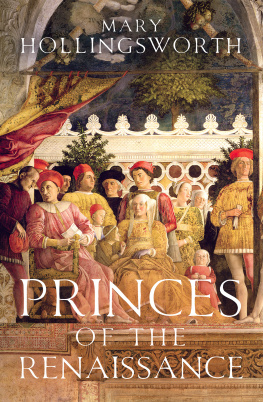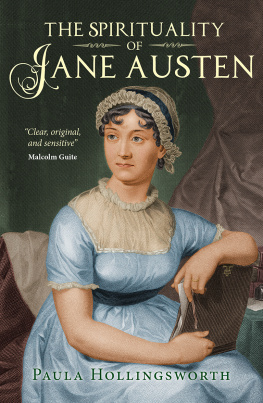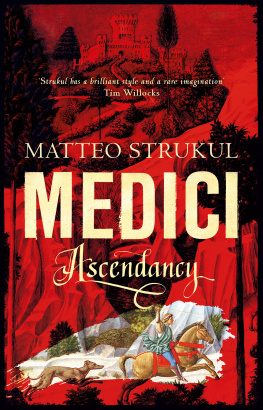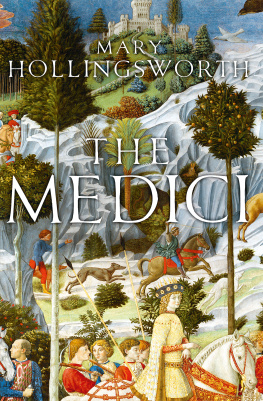Mary Hollingsworth - The Family Medici
Here you can read online Mary Hollingsworth - The Family Medici full text of the book (entire story) in english for free. Download pdf and epub, get meaning, cover and reviews about this ebook. year: 2018, publisher: Pegasus Books, genre: Detective and thriller. Description of the work, (preface) as well as reviews are available. Best literature library LitArk.com created for fans of good reading and offers a wide selection of genres:
Romance novel
Science fiction
Adventure
Detective
Science
History
Home and family
Prose
Art
Politics
Computer
Non-fiction
Religion
Business
Children
Humor
Choose a favorite category and find really read worthwhile books. Enjoy immersion in the world of imagination, feel the emotions of the characters or learn something new for yourself, make an fascinating discovery.
- Book:The Family Medici
- Author:
- Publisher:Pegasus Books
- Genre:
- Year:2018
- Rating:5 / 5
- Favourites:Add to favourites
- Your mark:
- 100
- 1
- 2
- 3
- 4
- 5
The Family Medici: summary, description and annotation
We offer to read an annotation, description, summary or preface (depends on what the author of the book "The Family Medici" wrote himself). If you haven't found the necessary information about the book — write in the comments, we will try to find it.
The Family Medici — read online for free the complete book (whole text) full work
Below is the text of the book, divided by pages. System saving the place of the last page read, allows you to conveniently read the book "The Family Medici" online for free, without having to search again every time where you left off. Put a bookmark, and you can go to the page where you finished reading at any time.
Font size:
Interval:
Bookmark:


Jacopo Pontormo, Cosimo de Medici, c.151819 (Florence, Uffizi), an idealized portrait celebrating the founder of the Medici dynasty. Cosimo was a man who dishonestly amassed a fortune and used it to subvert the Florentine republic, bribing his way to power with the help of his private army.
THE FAMILY
MEDICI

MARY HOLLINGS WORTH

T HE F AMILY M EDICI
Pegasus Books Ltd
148 West 37th Street, 13th Fl.
New York, NY 10018
Copyright 2018 by Mary Hollingsworth
First Pegasus Books hardcover edition March 2018
All rights reserved. No part of this book may be reproduced in whole or in part without written permission from the publisher, except by reviewers who may quote brief excerpts in connection with a review in a newspaper, magazine, or electronic publication; nor may any part of this book be reproduced, stored in a retrieval system, or transmitted in any form or by any means electronic, mechanical, photocopying, recording, or other, without written permission from the publisher.
ISBN: 978-1-68177-648-4
ISBN: 978-1-68177-710-8 (e-book)
Distributed by W. W. Norton & Company, Inc.
For my mother
Elizabeth Hollingsworth
19222017
Names and Dates
The Medici, like other families in medieval and early modern Italy, often chose to name their children after their parents or grandparents, a habit that causes much confusion to modern historians. To help the reader identify the character correctly, I have followed the Italian convention of giving both Christian name and patronymic where necessary. Thus, Lippo di Chiarissimo, for example, refers to Lippo son of Chiarissimo.
Another source of confusion concerns the calendar and the dating of events. In Rome, New Years Day was 1 January; but in Florence the year did not begin until 25 March, the Feast of the Annunciation. I have converted all relevant dates to conform to the modern style.
Money
In common with the other states that existed in Italy before the unification of the country, Florence had its own currency, the lira (1 lira = 20 soldi = 240 denari ), a silver-based coinage that was used for everyday transactions, such as buying food or paying wages. For more weighty business paying dowries, for instance, or assessing wealth for tax purposes, or international trade the Florentines used their florin, a gold coin that was recognized across Europe. Over the years the value of the lira declined steadily in relation to the florin: when the florin was first minted in 1252 it was worth 1 lira ; by 1500 its price had risen to 7 lire . Wherever possible, I have given the value of the sums involved in florins.
Other currencies are also mentioned in this book, notably the gold ducats of Venice and Rome, and the gold scudo (pl. scudi ), which replaced the Roman ducat in 1530. These gold coins were broadly similar in value to the Florentine florin.
Florence in ashes
rather than under the Medici
M idsummers Day, 24 June: the Feast of St John the Baptist, patron saint of Florence, and the highlight of the Florentine year. San Giovanni, as the holiday was known, was traditionally a day for best clothes and parties, when dining-tables would be piled high with good food and the air would be filled with the sounds of music, chatter and laughter. Out on the streets, the people could inspect the eye-wateringly expensive goods on show at the stalls of the guilds, watch gaudy parades of floats and marvel at spectacular firework displays. Buskers and tumblers hoped to profit from the holiday mood, and there were bets to be placed on the annual horse race through the narrow cobbled thoroughfares, and tickets to be bought for the bullfights, mock battles and football matches. Standing on their balconies or jostling on the pavements, the Florentines could witness the great procession of the citys churchmen making their way through the streets, singing and chanting, sprinkling holy water, shaking their thuribles to release clouds of incense and blessing the crowds, while the church bells rang out in a noisy, joyful clamour.
On the morning of the feast, the Florentines celebrated the power and wealth of their city in magnificent style, in the piazza in front of the Palazzo della Signoria the seat of their republican government. Gathered there would be Florences leading citizens and guild consuls, officials of the Mint with their bags of gold florins, foreign lords, knights and ambassadors riding superbly caparisoned horses, and, most thrilling of all, the delegations from Florences subject towns and territories, who knelt in homage to the nine men of the republics ruling council, the Signoria .
In 1530, however, things were very different. That year, San Giovanni was a funereal affair. There were no banquets nor bullfights, no laughter nor music, just one solemn procession. The sombre crowds who gathered on the streets that morning watched in silence as the Signoria and other government officials walked barefoot from the Palazzo della Signoria to the cathedral, dressed in brown, the colour of mourning. They carried lighted tapers behind a procession of treasured relics, their aim to implore God to aid their beleaguered city. Florence was under siege. Camped around the walls, in rows of tents that stretched as far as the eye could see, were 30,000 enemy soldiers and their paymaster was one of Florences own sons: Giulio de Medici, now Pope Clement VII.
Three years earlier the Florentines had voted overwhelmingly to banish the Medici from the city, but Clement VII was determined to reverse this quite lawful decision, whatever the cost. He did not regard Florence as an independent republic but as the personal fiefdom of his own family; and his goal was to install his illegitimate son as its ruler. He had powerful allies. The troops outside the city gates were part of the mighty army of Holy Roman Emperor Charles V, who had agreed to help Clement VII in his naked bid for power. Pope and Emperor had also used their political muscle to ensure that Florences allies France, Venice and Ferrara now deserted its cause. Florences subject towns had been captured and its supply lines almost entirely cut off, depriving the city of food and munitions. Only the army remained to defend the city from the Medici, and it was a puny force of 12,000 men, only half of whom were professional soldiers, the rest being poorly trained militiamen.
Conditions inside the city were terrible. The population of 60,000 plus another 30,000 refugees who had fled into Florence at the approach of Imperial troops was shrinking fast. Weakened by a diet of coarse bread and water, 200 people a day were dying from hunger and disease. What wine, oil, grain and meat remained had been requisitioned for the troops. As the Venetian ambassador, who stayed in the city throughout the siege, reported in June, there is a little wheat but that is being given to the soldiers, and the rest are eating bread made from sorghum or semolina; there is no meat of any sort, no horsemeat or cats left, and mice are selling for 16 soldi each just below what had been the daily wage for a skilled craftsman before the siege. They are all prepared to die for their liberty, the ambassador concluded.
Next pageFont size:
Interval:
Bookmark:
Similar books «The Family Medici»
Look at similar books to The Family Medici. We have selected literature similar in name and meaning in the hope of providing readers with more options to find new, interesting, not yet read works.
Discussion, reviews of the book The Family Medici and just readers' own opinions. Leave your comments, write what you think about the work, its meaning or the main characters. Specify what exactly you liked and what you didn't like, and why you think so.

